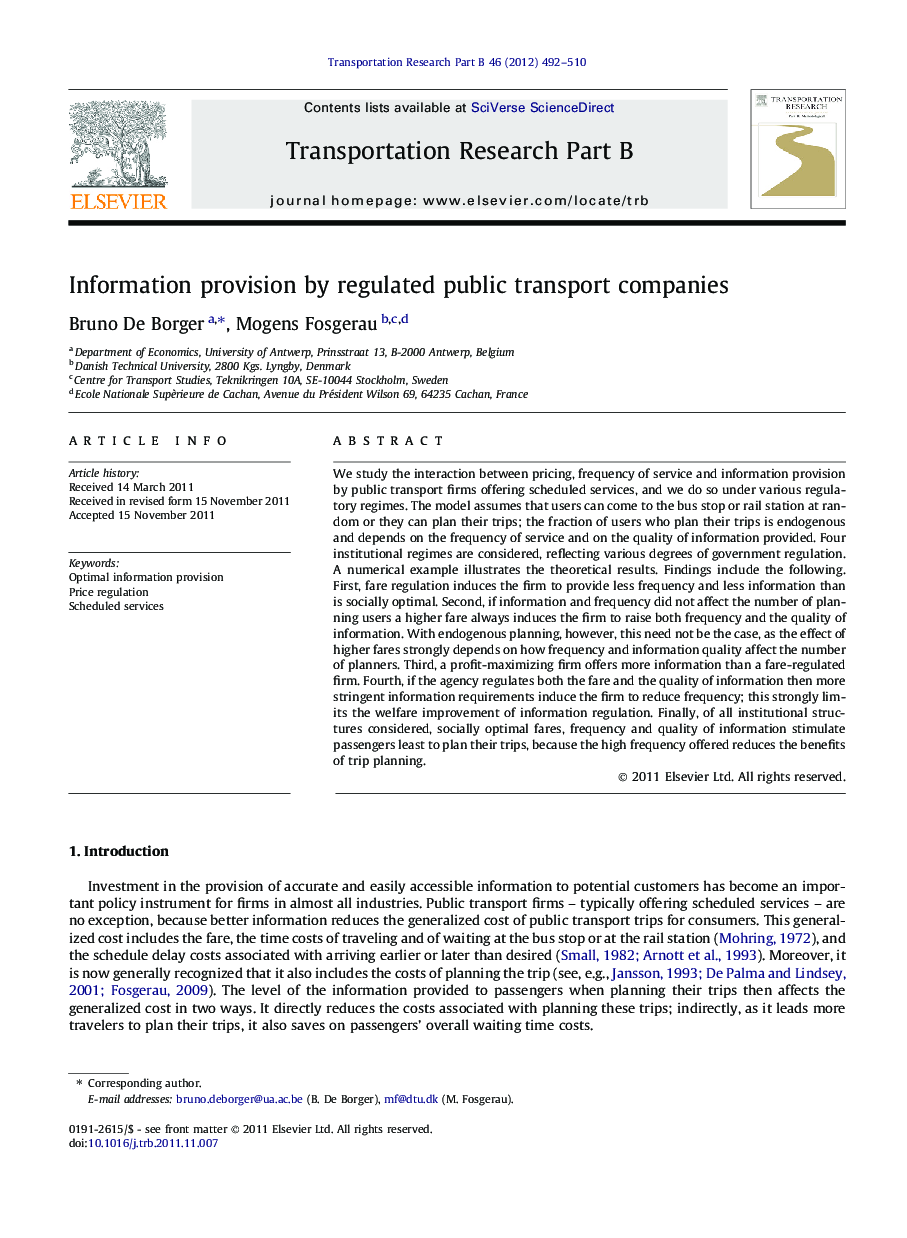| کد مقاله | کد نشریه | سال انتشار | مقاله انگلیسی | نسخه تمام متن |
|---|---|---|---|---|
| 1132486 | 955782 | 2012 | 19 صفحه PDF | دانلود رایگان |

We study the interaction between pricing, frequency of service and information provision by public transport firms offering scheduled services, and we do so under various regulatory regimes. The model assumes that users can come to the bus stop or rail station at random or they can plan their trips; the fraction of users who plan their trips is endogenous and depends on the frequency of service and on the quality of information provided. Four institutional regimes are considered, reflecting various degrees of government regulation. A numerical example illustrates the theoretical results. Findings include the following. First, fare regulation induces the firm to provide less frequency and less information than is socially optimal. Second, if information and frequency did not affect the number of planning users a higher fare always induces the firm to raise both frequency and the quality of information. With endogenous planning, however, this need not be the case, as the effect of higher fares strongly depends on how frequency and information quality affect the number of planners. Third, a profit-maximizing firm offers more information than a fare-regulated firm. Fourth, if the agency regulates both the fare and the quality of information then more stringent information requirements induce the firm to reduce frequency; this strongly limits the welfare improvement of information regulation. Finally, of all institutional structures considered, socially optimal fares, frequency and quality of information stimulate passengers least to plan their trips, because the high frequency offered reduces the benefits of trip planning.
► We study information, pricing and frequency decisions of public transport firms.
► A profit-maximizing firm offers more information than a fare-regulated firm.
► Regulated fares imply lower frequency and less information than is socially optimal.
► Imposing information requirements induces the firm to offer lower frequency.
Journal: Transportation Research Part B: Methodological - Volume 46, Issue 4, May 2012, Pages 492–510